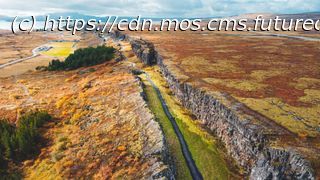It’s the first time Earth’s geologic record — information found inside rocks — has been used to create an animation of this kind.
Using information from inside the rocks on Earth’s surface, we have reconstructed the plate tectonics of the planet over the last 1.8 billion years.
It is the first time Earth’s geological record has been used like this, looking so far back in time. This has enabled us to make an attempt at mapping the planet over the last 40% of its history, which you can see in the animation below.
The work, led by Xianzhi Cao from the Ocean University in China, is now published in the open-access journal Geoscience Frontiers.A beautiful dance
Mapping our planet through its long history creates a beautiful continental dance — mesmerising in itself and a work of natural art.
It starts with the map of the world familiar to everyone. Then India rapidly moves south, followed by parts of Southeast Asia as the past continent of Gondwana forms in the Southern Hemisphere.
Around 200 million years ago (Ma or mega-annum in the reconstruction), when the dinosaurs walked the earth, Gondwana linked with North America, Europe and northern Asia to form a large supercontinent called Pangaea.
Then, the reconstruction carries on back through time. Pangaea and Gondwana were themselves formed from older plate collisions. As time rolls back, an earlier supercontinent called Rodinia appears. It doesn’t stop here. Rodinia, in turn, is formed by the break-up of an even older supercontinent called Nuna about 1.35 billion years ago.Why map Earth’s past?
Among the planets in the Solar System, Earth is unique for having plate tectonics. Its rocky surface is split into fragments (plates) that grind into each other and create mountains, or split away and form chasms that are then filled with oceans.
Apart from causing earthquakes and volcanoes, plate tectonics also pushes up rocks from the deep earth into the heights of mountain ranges. This way, elements which were far underground can erode from the rocks and end up washing into rivers and oceans.
Домой
United States
USA — IT Mesmerizing animation shows Earth's tectonic plates moving from 1.8 billion years ago...






